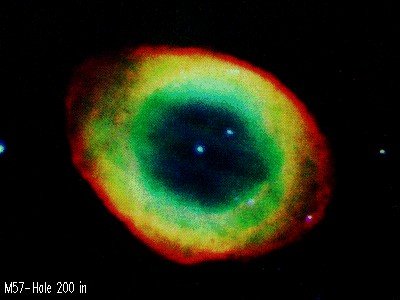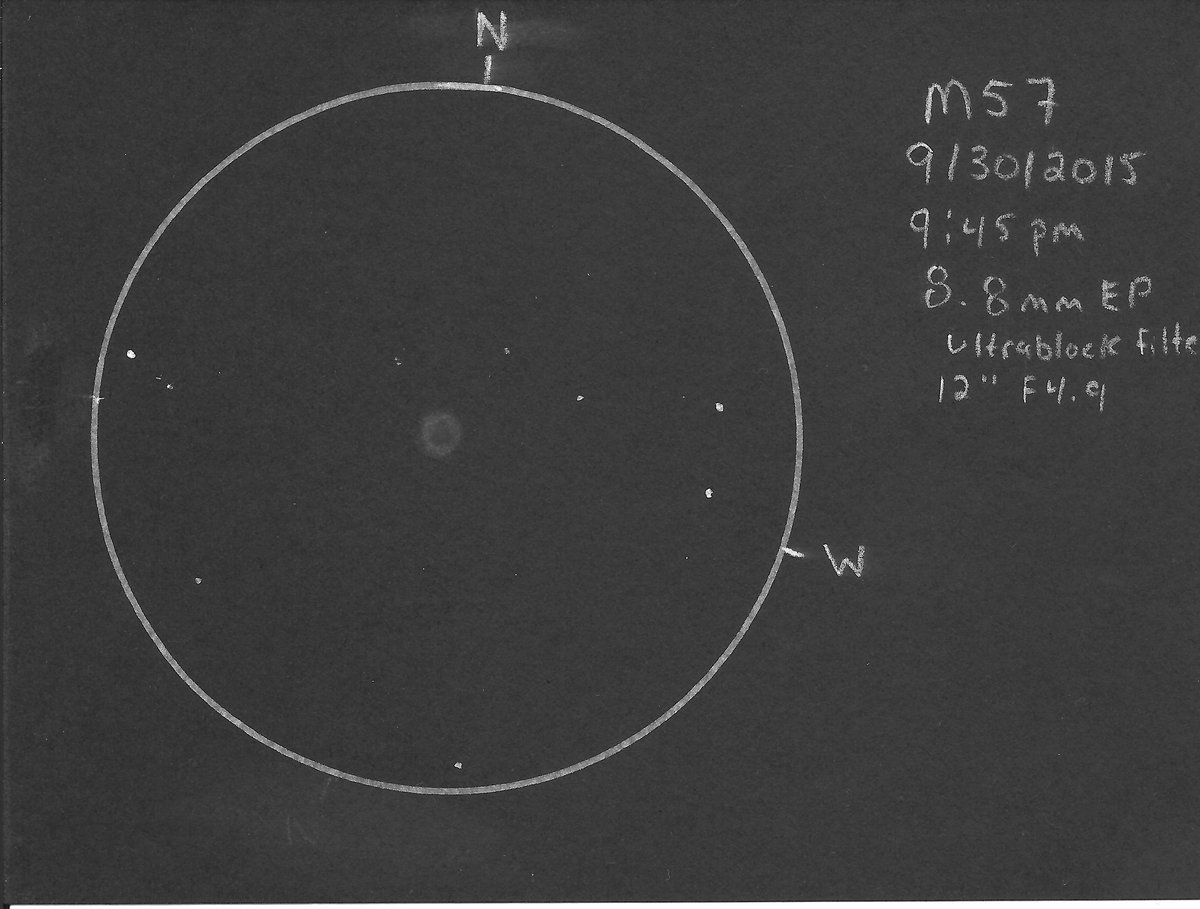Current Info for Observer
as of 07/27/2024 8:50 a.m.
Please login to view current observation details
General Info
| Type | Planetary Nebula |
| Constellation | Lyra |
| Right ascension | 18h53'34.900'' |
| Declination | +33°2'43'' |
| Magnitude | 8.800 |
| Distance | 4,100ly |
| Size | 1.400 arc min |
| Catalog Designations | NGC6720, M57 |
| Discovered | 1779 Antoine Darquier |
Generate a finder chart
The following form will generate a PDF finder chart suitable for printing using to locate objects in the sky with your telescope!
The Date is only really useful for solar system objects, as deep space objects move measurably only on a galactic timescale.
The larger the F.O.V (field of view), the more "zoomed out" the object will appear. It can be helpful to print several charts of the same object with different field of views.
Limiting the magnitude (remember, lower magnitude means brighter!) of stars and objects can make sure your chart is not cluttered with dim objects that you may not be visible to you anyway. The defaults are good, but try experimenting with raising and lowering the values.
Orion 10XTi
10 points
Orion XT8
10 points
Very detailed under tonight's conditions. Very pronounced ring shape with a hint of color
10" Dobsonian
10 points
Celestron 127eq
10 points
A friend joined me at my dark site with her telescope last night. We quickly figured out that her StarPointer wasn't working, so we just used my scope. After showing her some sights (Pleiades, Andromeda, Great Hercules Cluster, etc.) I decided to take a peek at the ring nebula. Small and round, I found that looking directly at it I couldn't make out the ring shape, but by focusing to the side of my FOV I could make out the darker interior.
Please login to post comments

